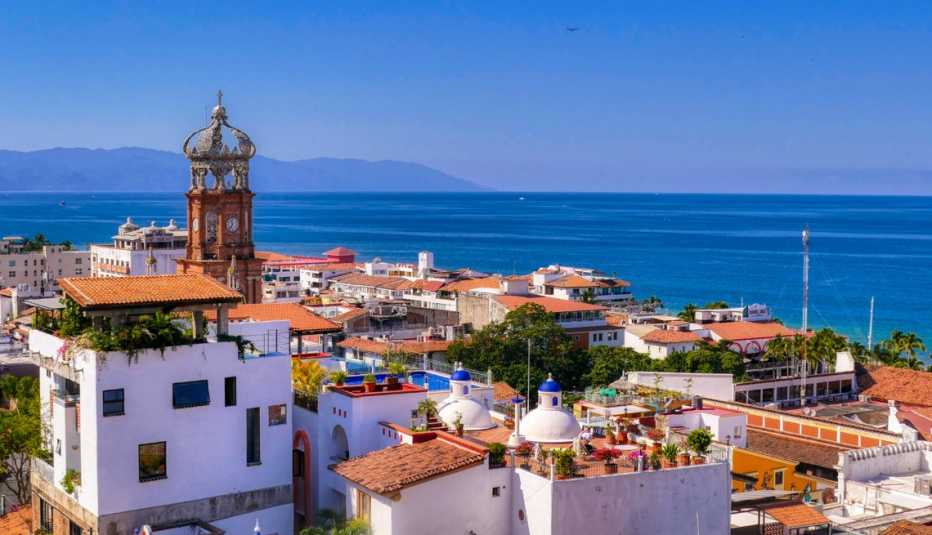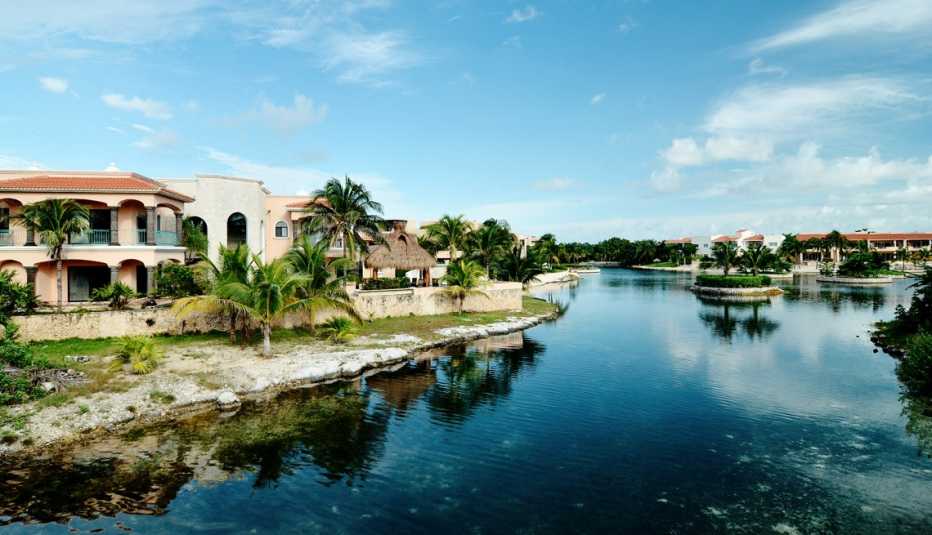AARP Hearing Center


In the mid-2000s, when she was winding up her career as an accountant in Houston, Harriet Rich decided to make a bold lifestyle change in her retirement by moving to Mexico.
Rich, 80, wanted to live in a warm climate, maintain her knowledge of Spanish and immerse herself in a new culture. She also had an economic motivation.
“I knew that my money was going to go further there, and that I was going to be able to have a lifestyle that I simply couldn’t afford as a retiree otherwise,” she says.
For the equivalent of $30,000, Rich was able to buy land to build a home in Valladolid, a nearly 500-year-old city of 85,000 on the Yucatán Peninsula. With its distinct cultural life and relatively low expenses — Rich estimates it’s possible to live comfortably in Valladolid for as little as $2,000 a month — the city turned out to be the perfect place for her. She’s developed close friendships with her neighbors, and she tutors local schoolchildren.
Rich is one of the many Americans who’ve made Mexico into the most popular destination in Latin America for U.S. retirees. The Social Security Administration paid benefits to more than 62,000 people in Mexico in December 2023; only Canada and Japan are home to more beneficiaries.


In addition to lower living costs, Mexico offers a varied climate, from tropical heat along the coasts to cool mountain air inland, and a wide range of places to live, from beach resorts and modern metropolises to historic cities and quiet small towns where expatriates can experience an authentic Mexican lifestyle.
Is Mexico Safe for Retirees?
Portrayals of Mexico in movies, TV and news coverage as crime-ridden and cartel-run may give American retirees pause about moving there. And some parts of the country are potentially hazardous enough that the U.S. Department of State issues travel advisories about them. But experts and expats say areas where Americans settle are generally safe.
“Most of Mexico is fine,” says Lief Simon, real estate editor for the retirement guide publisher Live and Invest Overseas.
“It depends upon where you are,” he says. “If you’re in a border town that’s part of the drug-trafficking routes, then there are safety issues. But if you’re in a tourist area, like Puerto Vallarta, the drug guys, they don’t want attention, so they try to avoid those areas.”
World Population Review, a website that aggregates demographic data, ranks Mexico 41st in crime rate out of 144 listed countries in 2025, with 53.8 crimes reported per 100,000 population. The U.S. ranks 57th with 49.3 crimes per 100,000 people.
Simon recommends that retirees visiting or newly settled in Mexican communities ask around and talk to locals about the safety of various areas. Wherever you go, he adds, it’s wise to not wear expensive jewelry or otherwise conspicuously display wealth.
Americans who encounter problems of various sorts in Mexico can contact the U.S. Embassy in Mexico City or one of the nine U.S. consulates located throughout the country. You’ll find contact information for all the diplomatic facilities on the U.S. Embassy website.
“Mexico has all of the things that an American retiree is looking for,” says Kathleen Peddicord, founder and publisher of Live and Invest Overseas, which produces books, newsletters and online guides on moving and doing business abroad. “It’s accessible and nearby, and it has great weather and great beaches, and it can be really, really affordable.”
Because Mexico is so close, it’s easy to split your time between there and the U.S. Heidi Kimsey, 62, and her husband, Larry White, 77, spend half the year in Mexico (mostly in Valladolid) and half in Asheville, North Carolina.
“We’ve been driving back and forth,” Kimsey says. “We usually leave for Mexico sometime in late October and then head back north in April.”
What are the requirements to retire in Mexico?







































































More From AARP
8 Places to Retire in Europe
The basics on getting residency, health care and more
5 Healthy Reasons to Love Mexican Food
Load up on the guacamole, guilt-freeWorld's Best Places to Retire
Global spots where your money goes farther
Recommended for You